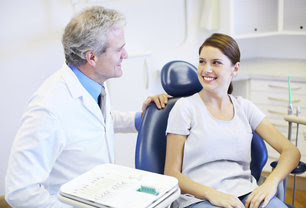Sleep is key to maintaining a healthy lifestyle, but for the approximately 30 million Americans who suffer from obstructive sleep apnea, refreshing sleep can be difficult to obtain. Obstructive sleep apnea is caused when muscles relax during sleep, which results in the tongue and soft palate collapsing onto the back of the throat, blocking the upper airway. When this happens, people can stop breathing up to hundreds of times a night for anywhere from a few seconds to more than a minute, making obstructive sleep apnea a potentially life-threatening condition that can increase the risk for other serious health problems. However, the good news is that getting the initial screening for obstructive sleep apnea can be easy.
New research from the University of North Carolina shows that use of the brief STOP-Bang questionnaire given to patients during regular dental check-ups can effectively determine if they are at risk and drive treatment options.
The study — which was recently presented at the American Academy of Dental Sleep Medicine (AADSM) 26th Annual Meeting in Boston — tracked 119 dental patients who were administered the STOP-Bang screening questionnaire at a Raleigh, North Carolina dental practice. The STOP-Bang questionnaire determines risk for sleep-disordered breathing by asking patients if they have any of the following symptoms or characteristics: loud snoring, daytime tiredness, witnessed obstructive sleep apnea, high blood pressure, a BMI greater than 35, age older than 50 years, a neck circumference of 41 cm or more for women or 43 cm or more for men, or male gender.
Patients are considered to be at high-risk for sleep-disordered breathing if they note a presence of at least five of the symptoms or characteristics, or if they have at least two of the STOP symptoms and one of these three Bang characteristics: BMI greater than 35, large neck, or male gender. Using this criteria, 56.3% of the patients screened in this study were at high-risk for sleep-disordered breathing, showing that this questionnaire can be effective in screening for obstructive sleep apnea, and further proving the need to get screened if you have symptoms of this disease.
At your next dental exam, ask your dentist about being screened for sleep-disordered breathing. In addition to using a questionnaire, your dentist may examine your mouth, jaw, tongue and tonsils to determine your risk.
If you are found to be at risk, visit a sleep physician to get tested for sleep apnea. Once diagnosed, you and your doctor can discuss the best treatment option for you, including oral appliance therapy. This treatment consists of a mouth guard-like device that holds your jaw forward to keep your airway open during sleep, and can be provided by a qualified dentist.
If you decide that oral appliance therapy is right for you, visit www.LocalSleepDentist.com to find a qualified dentist in your area. You can learn more about this study and about the effects of untreated obstructive sleep apnea at www.aadsm.org.


